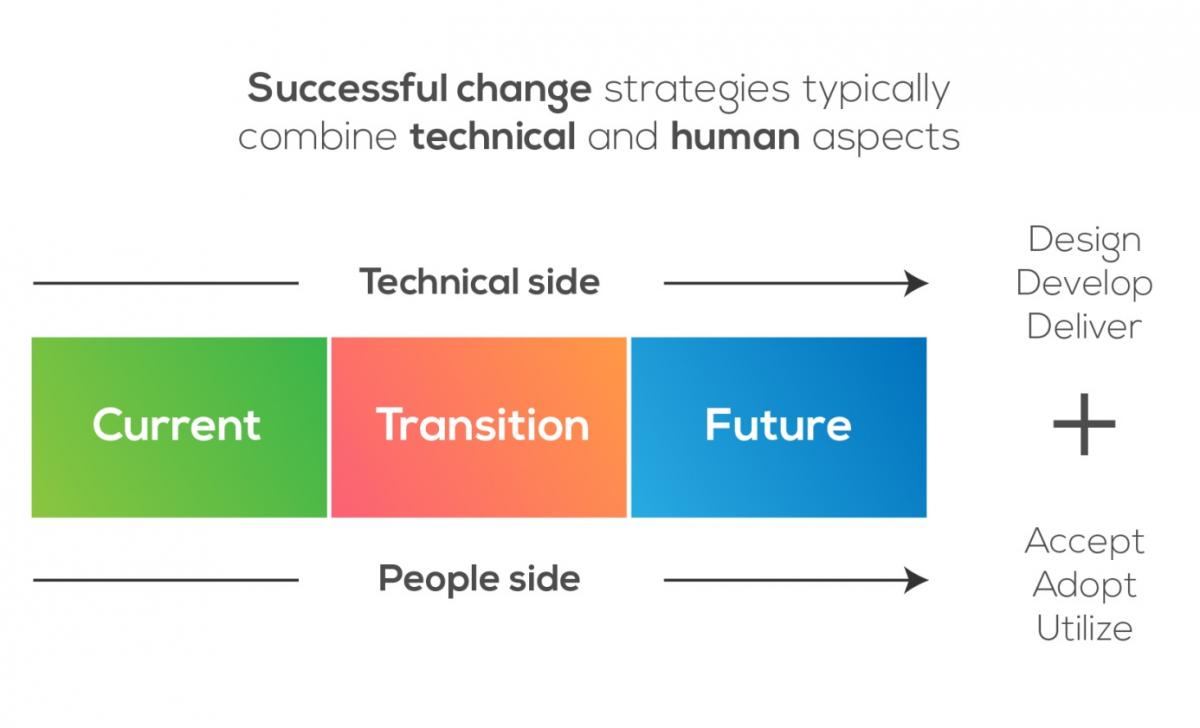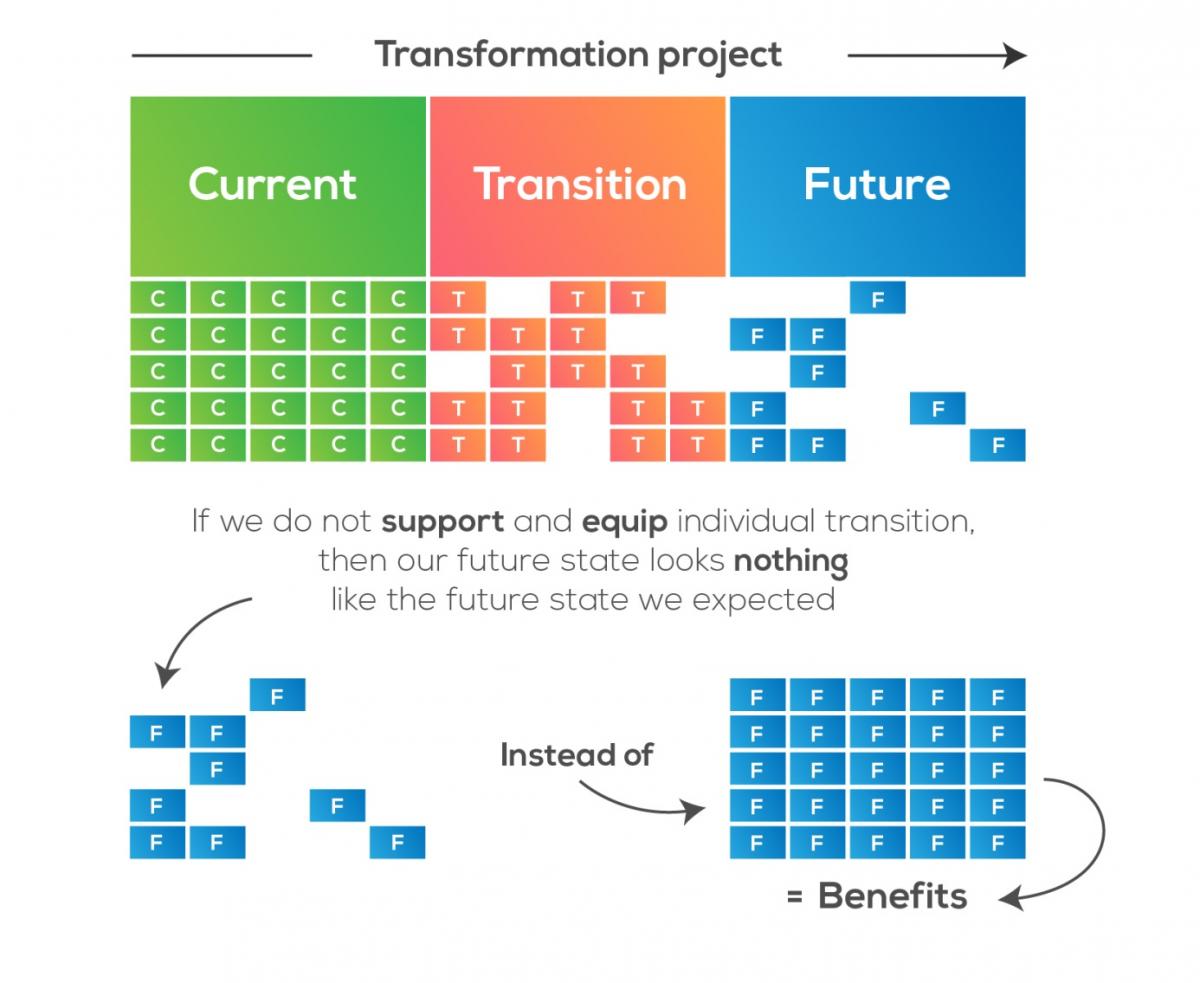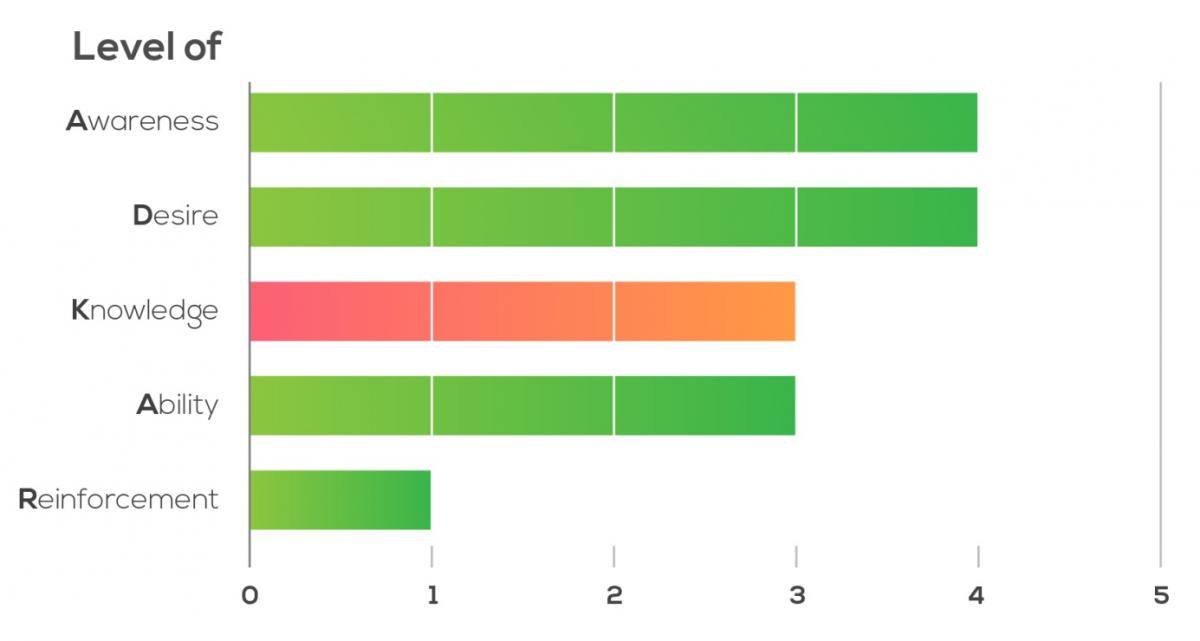Change Management - Foundations (II)
18 Apr 2017
«What»
Article written by Vincent Halluent
18 Apr 2017
«What»
Article written by Vincent Halluent
Organizations do not change, people do. Change cannot be prescribed on the basis of a new organigram, a new digital strategy or the acquisition of a company. Likewise, no change will ever happen just because it is scheduled for completion at a certain date. Change is not an event. It is a multiphase and multilevel process. Simply put, it requires actions specifically tailored to a given audience at a given time.
Anglo-Saxons and Scandinavians, among others, have long understood what Change Management is. In these countries, a career path in CM leading to the position of Change Management Officer or member of the Executive Committee is entirely possible. Anyone who needs convincing of this has only to take a quick look at LinkedIn. Latin cultures such as ours in Belgium, France, Spain, are clearly lagging behind. In these cultures, Project Management and Change Management have been conflated. And in the best case scenario, CM is conceived of as a mix of communication and training. It certainly includes these aspects, but it is much more than that. CM is a structured and holistic approach that seeks to equip people and the organization as a whole with change management skills, thereby turning organizations into more agile and resilient structures capable of absorbing many complex changes at once. Any efficient framework for managing the change should significantly increase the number of people engaged in the transformation – the so-called critical mass – and accelerate the adoption speed of the new business model as well as the new working routines. It should finally improve team productivity within the new organization by stimulating mindset shifts and expected behaviors (Graph Copyright © Prosci).
 CM is a process.
CM is a process.
Just like any project, change is characterized by a beginning and an end, by a current state and a future, expected and specific state. Between the two lies the transition period, that is, where the change per se really takes place. The first state symbolizes the current situation and mirrors how things are done today. You assess the context, the organization and change characteristics, prepare the CM team and build a coalition of sponsors. Moving one step forward takes you through the transition (state). It all comes down to managing and implementing the change. At this point, you shape new working routines by empowering individuals, senior managers and collaborators to go through their own changing process. The third state represents the future envisioned state. It is the time for results, overall assessment and celebration. It is not an endpoint in itself but should rather be seen as the last stop before exiting the formal process, consolidating transformational efforts and ensuring long term sustainability. Interestingly enough, computer scientists call this exit gate of the project “the run phase”.
Depending on the given state, different activities or tools are at your disposal. Milestones will be set and integrated with the Project Management plans. Likewise, intermediate and measurable deliverables will be expected.
Grassroots level: individual initiative.
Supporting individuals through the personal transition is a key part of the transformational efforts undertaken by the organization. Remember that no one person experiences the process in the same way. Developed by our partner PROSCI, the ADKAR model is the best methodological tool available in the market to assist individuals throughout the transition process, which can be sequenced into 5 parts. Raising awareness (A) of the need to change and awakening the desire of employees and managers (D) to participate in the change – best achieved by promoting one-on-one assessments of “what’s in there” for each of them – are the first two building blocks of the transition at the individual level. They roughly correspond to the first phase of the process. Providing knowledge (K) on how to change and developing the abilities of the staff to implement the change in their own eco-system of clients and collaborators (A) ensures a smooth transition and on time delivery (second and third stages). Exiting the formal process, reinforcement (R) activities such as personal recognition, gathering feedback and implementing corrective actions help sustain the change in the long run.
Failure to assist each person throughout his or her individual transformation means that, at the end of the journey, there will be no critical mass.
 Up a level: targeted groups and teams
Up a level: targeted groups and teams
CM seeks to determine which groups are likely to be the most impacted (target groups), no matter whether they belong to the same team or not. Creating tailor-made support helps mitigate side-effects such as resistance and productivity decline. In organizations saturated by overlapping and extremely long changes, it is even more important to carefully target impacted groups. ADKAR levels of the team or impacted group, just as individual ADKAR levels, are measured in order to identify a bottleneck (in red) and determine the best suited action at any given time. Equipping the organization.
Equipping the organization.
CM is a process at the organizational level (preparing, leading and reinforcing the change) but it is also an essential skill for any organization aspiring to become agile. If not, how would they manage further transformations? Because it provides adequate tools and planning, CM certainly comes in handy when leaders are faced with the task of implementing a substantial amount of changes. Equipping the organization with CM skills requires embedding into its structures roles, processes, projects and commercial approaches in order to change partners' and clients' behaviors. It is thus a matter of infusing a “change management” culture throughout the whole structure and beyond – from subcontractors to distributors to clients. It is the best guarantee for an organization to stay on top of its game and quickly adapt in an ever-changing landscape and ever more frequent change saturation situations.
As a rough estimate, 10 % of the overall transformation budget (source PROSCI) should be allocated to change management. The more the success of the transformation depends on men and women and not processes and systems… the more it is essential to invest in CM. Indeed, CM maximizes the people-dependent ROI of the change, or in other words, the way they deal with and integrate the change.
Change Management - Foundations (I)
Combined with a compelling message, a structured approach to the people side of change multiplies by 6 your chances of success.
Written by
Luc De Jaeger
Change Management - Foundations (III)
User-friendly and holistic, PROSCI offers a complete set of processes, tools and research-based assessments that project leaders and business managers can apply to specific projects while diffusing internal CM skills.
Written by
Luc De Jaeger
Using the right language to convince leaders and managers of the value of CM is all it takes to get the project off to a great start. CMROI helps put the people-side contribution to change into perspective.
Written by
Vincent Halluent